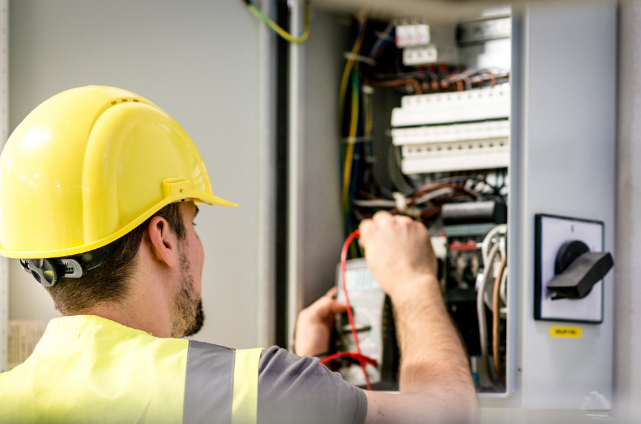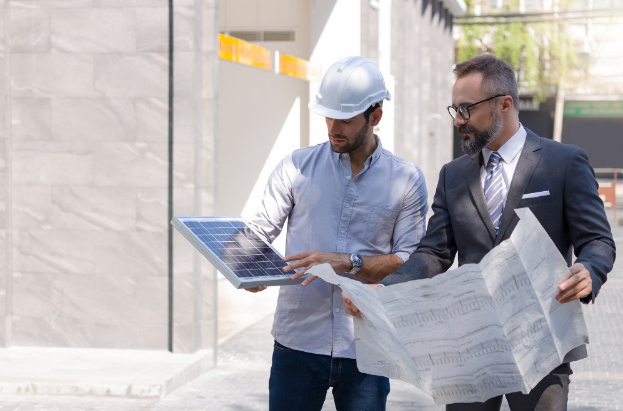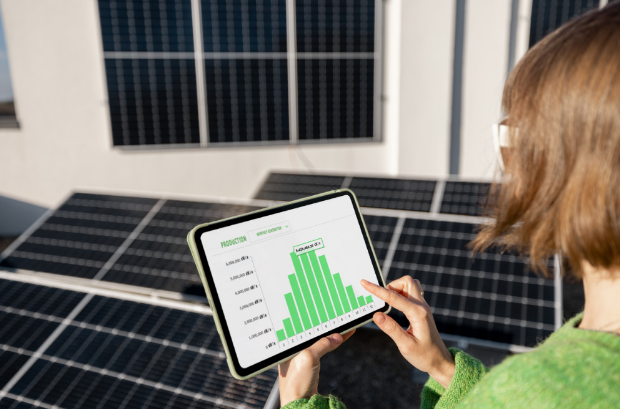
Battery Storage System Installation
You may think about battery storage for your home but want to know about the installation process. Here, we'll provide you with a comprehensive guide from initial evaluation and system design to equipment installation and commissioning.
A complete understanding of the battery storage system installation process helps the homeowner make well-informed decisions about using renewable energy sources.
Components of Battery Storage System
Inverter
The inverter is usually installed in your attic close to the panel array.
Placing the inverter in a cool and dark place is highly effective. Your garage, loft space, or utility room is the best place for this since they stay cool and have ventilation most of the year.
When setting up a retrofit battery storage system, it will require a separate inverter from the solar PV inverter. However, it will be installed according to your recommendations.
Battery Storage System
We typically offer Lithium-ion batteries for your solar panels. Their physical sizes increase with their capacity. Further, they provide high durability with little to no maintenance. Install them in cool and ventilated spaces for high outcomes.
In-Home Monitoring System
An in-home monitoring system comes with every installation. It helps you inspect the performance of your battery storage system. You can remotely connect to the system through a gadget that deploys Wi-Fi, like a tablet or smartphone.
Steps-by-Step Guide for Solar Battery Storage System Installation
Here are the following steps to install battery storage systems in your homes to ensure optimal performance and longevity.
1.Site Evaluation and Energy Audit
Before installing a solar battery storage system, you must take a thorough site evaluation and energy audit.
Site evaluation includes assessing the physical features of your property, such as available space and roof orientation, to ensure the feasibility of the solar system installation and battery placement.
In addition, an energy audit can help evaluate your current energy utilization patterns, recognize areas for optimization, and estimate the perfect size and capacity of the battery storage system required to fulfill your energy needs.
2.Submit Permitting Applications
The permitting requirements are based on your location and the specific regulations of your government.
The process usually involves submitting permit applications, offering application project details, and ensuring compliance with safety standards and local building rules.
If you work with professional installers, they will help you in the permitting process and ensure that all required approvals are obtained before proceeding with the solar installer process.
3.Electric Assessment
Do a detailed electric assessment before installing a battery storage unit. Upgrade your electric system if necessary. These upgrades, modifying your electric panel, reinforcing wiring infrastructure, and installing the old circuits ensure an efficient and safe system.
An electrical evaluation by a professional will point out required upgrades, ensuring compliance with capabilities to manage the increased power flow from battery storage and solar panels. It will also ensure the amenability of the local electrical codes.
4.Installation of Battery Storage System
Solar batteries are usually installed in a designated space within a home, such as the basement, utility room, garage, or other outdoor location.
Choosing a location for battery storage highly depends on the available space, safety, and environmental conditions.
The battery installation system securely integrates the batteries and associates equipment to the structure.
5.System Inspection
Once the installation is complete, multiple tests are performed to evaluate the system's functionality. These include inspecting the electrical connections, verifying proper interaction between the parts, and assessing the batteries' charging and discharging capabilities.
System performance is assessed by measuring energy generation from the solar panel installation, the storage capacity of the batteries, and the efficiency of the energy conversion process. This ensures that the system is fulfilling the expected performance target.
Take Safety Measures for Battery Storage Installation
Applying safety measures is highly imperative during the solar battery storage installation process. Here are some following safety considerations;
- Hire experienced and licensed professionals like Innotinum to install batteries to ensure industry-perfect practices and safety measures are followed. We'll assist you in meeting specific government regulations for battery storage installation while ensuring the highest performance and longevity.
- If you installed the batteries indoors, they should be stored in a ventilated, fire-resistant space. It helps the batteries of thermal runaway and other potential hazards related to battery incidents.
- For safety regulations, remember to place smoke detectors and fire extinguishers around the battery storage.
- Install an extensive monitoring system to detect the health and performance of the energy storage system. It will track issues promptly, ensuring timely maintenance to reduce safety risks.
Required People and Time for Battery Storage System Installation
Best installers like Innotinum usually send one professional installer to set up the battery storage system. The installer is accountable for ensuring your installation is completed on time and to the highest standards. We will explain the whole installation process and answer all your queries.
Battery installation is comparatively easy and takes about half a day to finish. On the other hand, solar PV system installation takes 1-2 days to complete.
Choose the Best Solar Battery Storage System for Your Home
Choosing the right home solar battery storage system requires careful consideration, from assessing your solar energy requirement to evaluating system specifications and budget.
System Size and Design: The system design includes evaluating energy requirements, considering your consumption styles, and ensuring the desired level of energy independence. Sizing determines how it meets solar power demands and stores energy produced by solar panels.
Compatible with Existing Solar panels: Make sure the battery storage system you choose is compatible with your current solar panels and solar inverter as they work together to improve energy production and storage.
Battery Type: Multiple battery chemistries, such as Li-ion batteries and lead-acid batteries, provide varying performance in terms of cycle life, energy storage capacity, and discharge. So choose accordingly.
Budget: While the transparent cost of the system is a key point to understand, you should also assess the long-term financial benefits along with the budget.
Bottom Line
In short, it's important to know about battery storage system installation before actually practicing it. Locate the place, get approvals, and then hire a professional battery storage installer to achieve great energy performance and longevity.



